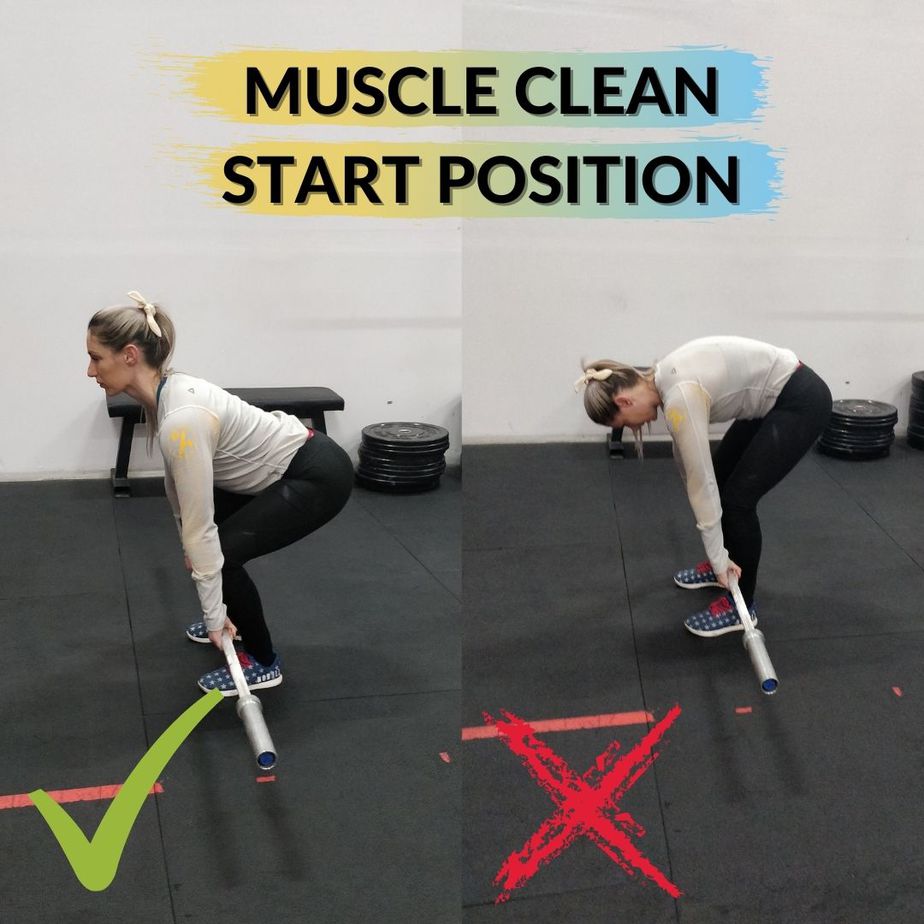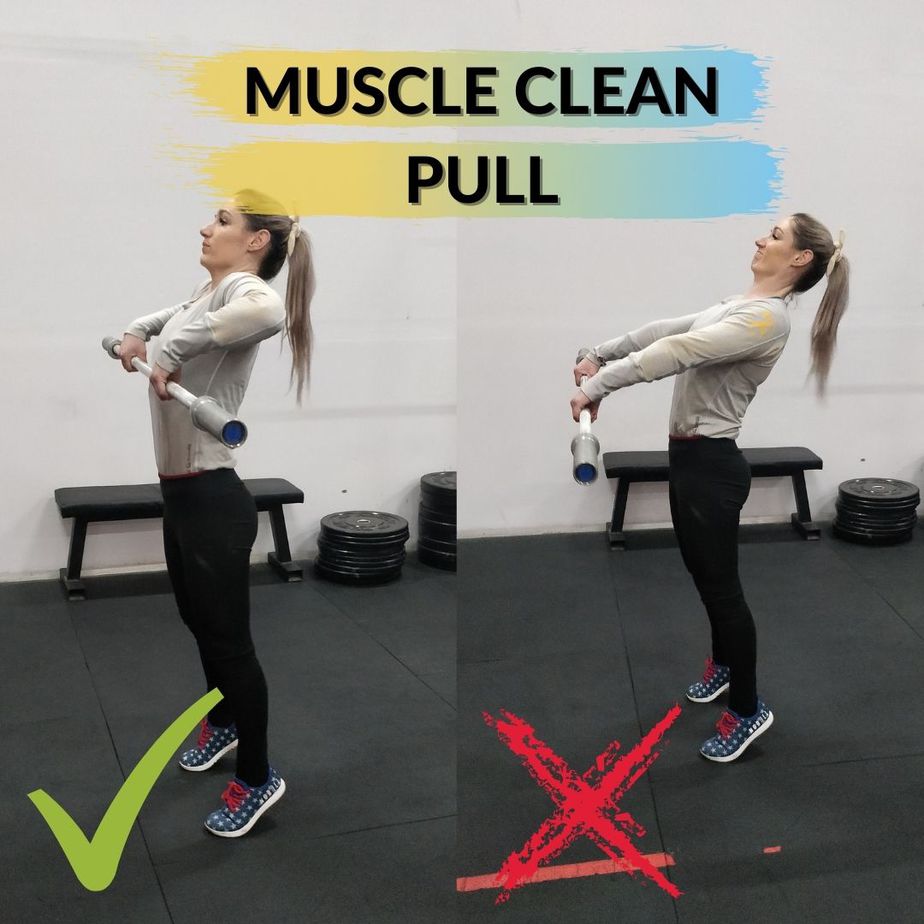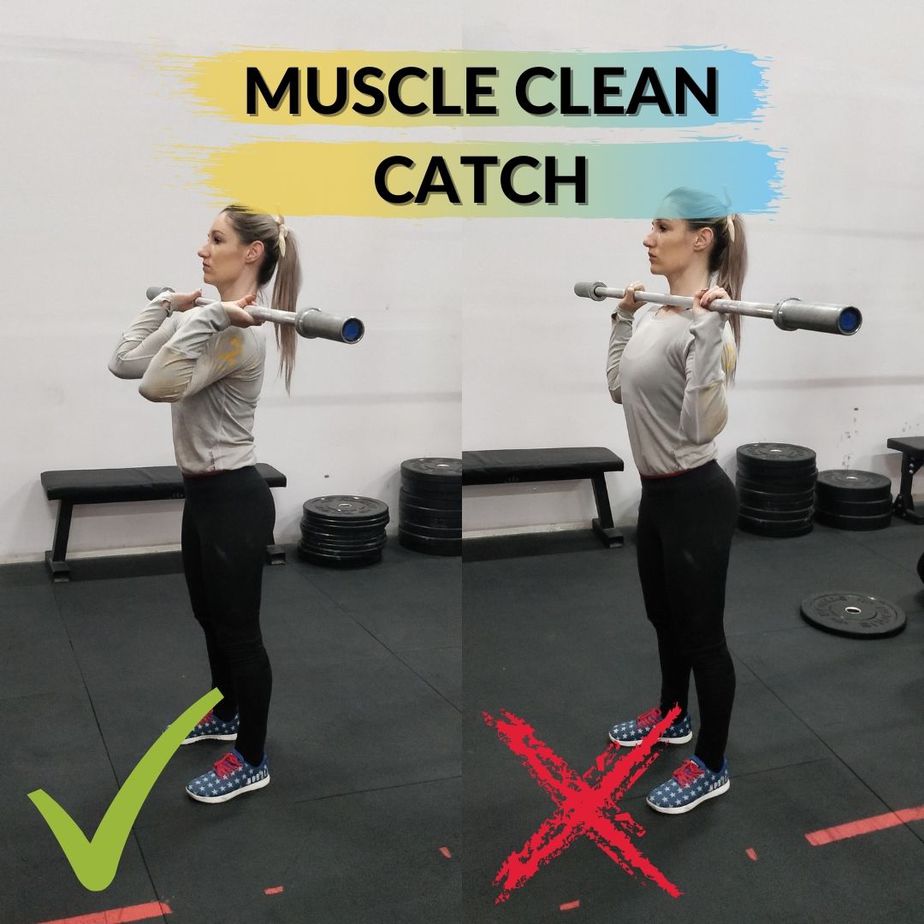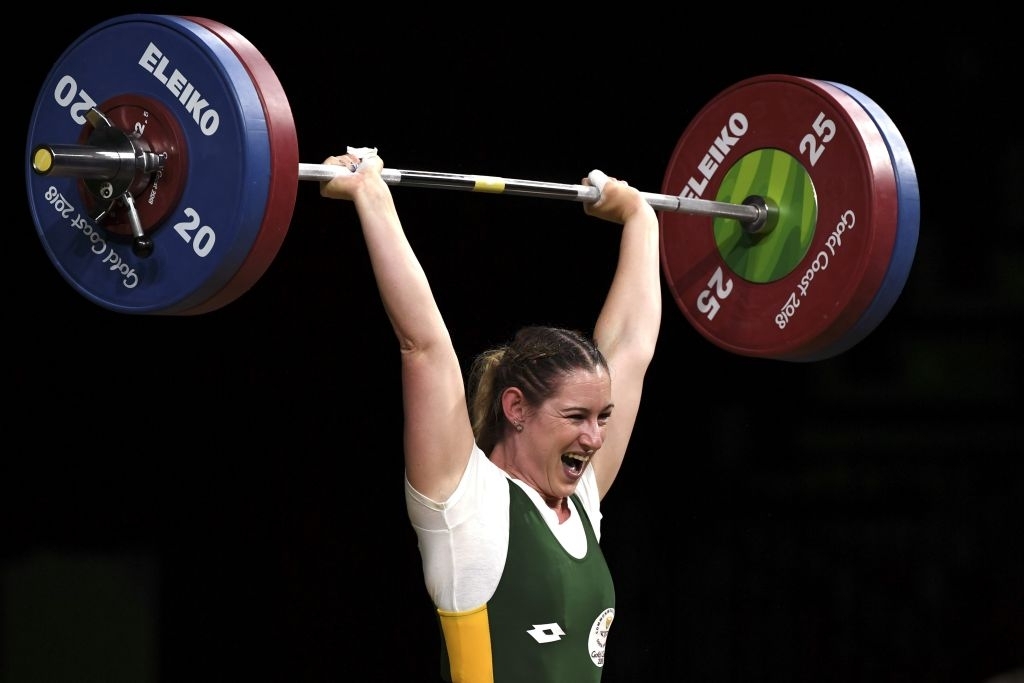The muscle clean is a clean variation that is commonly used in many Weightlifting programs. When done correctly, it can be an effective exercise to develop greater upper body strength for the clean.
It also reinforces the correct movement pattern which can translate into bigger numbers during the clean. So how do you perform the muscle clean correctly and when should you use it?
Table of Contents
How To Perform The Muscle Clean
The Starting Position
The muscle clean starting position should be exactly the same as your starting position for the clean. Starting at the feet, the barbell position should cut the foot in half. If the barbell is too far towards the heel of the foot, you are sitting back too far.
If the barbell is too far towards the toes, the barbell is too far from the body putting more stress on the lower back and limiting the loads that can be lifted.
Your bodyweight should be through the middle of your foot. Not on your heels or your toes. You should feel centered so you can push through your full foot.
Doing these things correctly will have your shoulders over the bar which is vitally important with your starting position so you can pull the barbell straight up.
The elbows should be pointing out towards the plates while keeping a big chest with the eyes fixed on a spot slightly above your line of sight when looking straight ahead.
The lats should be tight like you are holding a tennis ball under your elbows. Performing a simple straight arm pulldown will give you this exact feeling if you are struggling with it.
This is what will keep the barbell close to the body when you pull.
A big mistake in this position is setting up like a deadlift where the weight is on the heels and the eyes are looking down. This causes you to be behind the bar which will eventually force the barbell to be kicked out in front.
Further, having the eyes looking down and the head in a “neutral” spine position, it becomes very difficult to keep a big chest throughout the movement.
This causes a loss of tightness in the lats which are needed to keep the barbell close to the body and changes the angle of your back as you rise which should be kept constant.

The Pull
To initiate the pull, it’s important to push with the legs. Not pull with the back. This is a subtle cue that will ensure you maintain a constant back angle to your knees.
Your knees should travel slightly back so they move out of the way of the bar path. As you get past the knee, the acceleration of the barbell increases giving you the explosiveness through the second part of the pull.
The body stays over the bar like in our start position as long as possible while still pushing through the legs until your body becomes full vertical allowing maximum propulsion upwards.
Once you get past the knees, the lift should be the same as your hang muscle clean and high hang muscle clean. These are the positions you should be able to find as you master this movement.
When you are fully vertical, extend onto the toes with a big shrug of the shoulders. You will pull the barbell straight up with your elbows out to the side which creates the straight bar path.
If you didn’t stay over the bar throughout the pull, it means you have extended vertically too early and the only way to accelerate the bar to the catch position is to thrust the hips further forward and/or lean backward to gain the extra effort.
Unfortunately, this leads to kicking the bar out in front creating a looping motion of the barbell.

The Catch
This looping motion of the barbell will either:
As the barbell travels vertically up as close to the body as possible, the elbows will also be facing up just like an upright row. From this position, it’s about how quickly you can turn those elbows under the bar and out in front for the rack position.
This position should have the barbell sitting on your shoulders, against your neck, with the elbows pointing up as high as possible. The barbell can be in your hands or on your fingertips depending on your rack position flexibility.
If your elbows point down in this position, you will drop the bar and not even get it to the catch position when the weight gets heavier.
Unlike the power clean, you will not re-bend your legs when you catch the barbell. Once you extend vertically through the pull, your legs will remain straight when you catch the bar. This is what makes the exercise a muscle clean.
It is more strength orientated as you can’t dip back under the bar. This means you have to pull the bar higher rather than pulling yourself under.

Why Use The Muscle Clean?
Reinforce Correct Bar Path
Because the muscle clean slows the movement of the clean, we can focus on correcting the bar path. Further, the muscle clean provides immediate feedback of bar path by whether or not you complete the lift or not.
When the load is lighter, you may get away with an incorrect bar path. However, the light weight will feel very heavy in this instance providing you a different kind of feedback.
When the load gets heavy, if the bar part isn’t as vertical as possible, it will be near impossible to catch the bar.
As A Strength Exercise For The Clean
While performing various clean pulls carry over well to strengthening the legs and back for the clean, the muscle clean places more emphasis on the arms and traps. It develops the ability to pull the bar to the catch position.
Teaches A Fast Elbow Turnover
Along with strengthening the arms when pulling, the muscle clean teaches a fast turnover of the elbows. To catch the bar securely on the shoulders, you must be able to get the elbows through quickly especially since you can pull yourself under the bar.
An Off-Season Clean Variation
Various cleans and power cleans can be taxing on the body especially when performed all year round. The impact from landing and the heavy loading can start to cause discomfort in the knees or lower back.
The muscle clean removes both the landing impact and heavy loading making it a great clean variation to use when not preparing for a competition to reduce the loading on the body.
When To Use The Muscle Clean
The muscle clean is best programmed when far away from a competition, usually in the first cycle after a major competition. This gives the body a break from the landing impacts and heavier loading while still drilling the clean movement.
It also makes a great warm-up for the clean or power clean sessions. Some Weightlifters will perform their first couple of sets as muscle cleans to warm up the whole body before moving into the full movement.
Finally, the muscle clean can be taught to beginner Weightlifters to teach them the clean movement and bar path using a slower clean variation.
How Many Sets And Reps Of The Muscle Clean?
The muscle clean is generally performed for 4-6 sets of 3-5 reps with 40-50% of your clean 1RM. If you are a beginner and you’re not sure what your 1RM clean is, start with the barbell and work your way up until it starts to feel challenging while maintaining your technique.
Muscle Clean Variations
Different Hang Positions
Muscle cleans can be performed from all of the different hang positions. However, it is mainly only used from the floor due to how limited it is with loading.
Beginner Weightlifters may use the muscle clean as a teaching tool from various hang positions to teach the movement of the clean.
No Hook Grip
The muscle clean is often performed with no hook grip to help develop the grip. The load generally isn’t heavy enough to slip out of the hands so even at the higher end of loading around 50% of clean 1RM, you will still be able to no hook grip.

